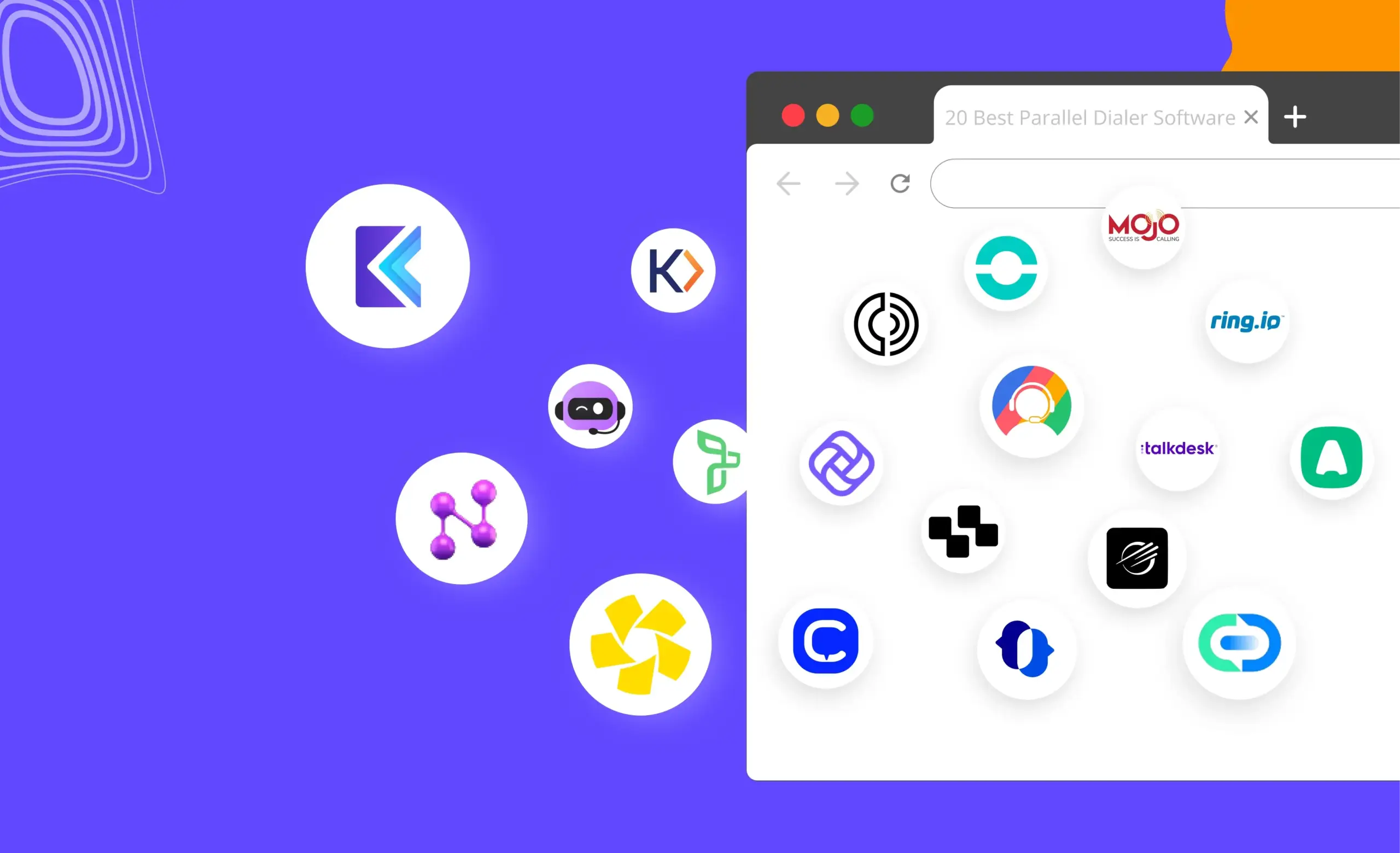You feel glad that your cold call gets connected. Enthused, you introduce yourself and your company.
But this enthusiasm fades away as you hear the prospect saying, "I don't have the time now."
When your prospects say this, more often than not, it's not about the literal lack of time. Instead, it is a polite way to brush you off.
So how do you avoid putting the brakes on the conversation, persuade them to engage, and prove that your cold call is worth their time, especially when they claim not to have the time?
In this blog, we’ll cover 6 strategies to help you overcome this objection, gain momentum, and have quality conversations with prospects.
But first, let’s understand why prospects say this objection in the first place:
Reasons for the Objection - I Don’t Have the Time
Some variations of this objection include:
- "I'm busy now"
- "This isn't the right time"
- "I'm too busy to talk right now"
During a cold call, it could mean the following:
- Busy schedule: The prospect genuinely may have a packed schedule with meetings, deadlines, and other commitments.
- Lack of interest: They may not see value in what you're offering and use lack of time as an excuse to end the conversation.
- Fear of commitment: They may feel apprehensive about committing to something new or unknown, so they use this objection to avoid making a decision.
In any of these cases, you must identify the underlying reason and tailor your pitch accordingly to keep the conversation going.
6 Strategies To Overcome the “I Don’t Have the Time” Cold Calling Objection
Don’t let the “I’m busy now” objection derail your confidence. After all, Just say, like every other objection, this one too must be overcome to get the meeting booked.
Here are 6 effective strategies to help you confidently tackle objections, spark productive conversations, and win more deals:
1. Offer Them Value Immediately
As the sales leader Anthony Iannarino says, “The greater the perception of value, the greater the likelihood you gain a commitment that moves you forward together.”
So, quickly pivot to offering value by bringing out your biggest benefit in quantifiable terms. Highlight a key benefit or piece of information that is relevant to their business challenges like:
- “Save 8 hours every week on manual CRM admin work”
- “Increase the ROI on your ad spend by 50%”
- “Save $5000 on your Tech spend every month”
Examples:
“Sorry to have called you at the wrong time. But busy people like you generally don’t like wasting time on things that don’t add value. Quick question: If I could show you how we can increase your ROI on {activity} by X%, is that something you’d invest 2 minutes learning more about?”How does this help?
- Quantifying the benefits makes them more concrete and understandable to the prospect.
- It allows them to visualize the potential impact your solution could have on their business, making it more compelling.
2. Ask a Qualification Question
Use this opportunity to qualify the prospect quickly. Ask a question that helps you understand if they're the right fit or if there's a genuine interest.
Examples:
1. “Really sorry to have caught you during a busy time. Before I schedule a time to get back to you, just a quick question: Is it your priority to fix [pain point] your product solves] this quarter?”
2. "No problem. Before you go, may I ask if [specific problem] is challenging for you?"Why does this work?
- By asking qualifying cold call questions, you're able to gauge whether the prospect is a good fit for your product or service.
- Asking questions about their challenges prompts the prospect to actively participate in the conversation rather than passively dismissing your call. This engagement can lead to a more meaningful interaction and increase the likelihood of moving the conversation forward.
3. Use the Bandwagon Effect
The bandwagon effect is when an idea or belief is being followed because everyone seems to be doing so. The way to use and overcome this objection is to tell the prospects that your previous callers said the same thing, but when they gave you the time, they learned more about your product or solution.
Examples:
When we contacted {customer}, they weren't quite sure either. But once they listened, they checked us out, and now they're seeing X% boost in ROI. I'm sure we can do the same for you. All I'm asking for is just a minute of your time to explain how.Here’s how this works:
- By mentioning that other similar prospects initially expressed the same objection but ended up finding value in the conversation, you create a sense of social proof. This can alleviate the prospect's concerns about wasting time and make them more open to hearing what you have to say.
- This could also pique your prospect’s curiosity. They may become interested in finding out what they might learn or gain from engaging with you, leading them to be more receptive to your pitch.
4. Ask For a Specific, Shorter Time Slot
Sometimes, simply asking when is the best time to discuss can keep the door open. It shows you're flexible and willing to work around their schedule. Suggesting a specific, short duration for the call, like 5 minutes, can make the request more palatable.
Examples:
1. “No problem. I totally understand what it’s like to be interrupted. Would it be better to call you for 5 minutes tomorrow morning at the same time?
2. “I understand. When would be a good time to call you for a quick 5-minute conversation on how we can help you {with solution}?How does this help?
- By acknowledging that the prospect may be busy and offering to schedule a call at their convenience, you demonstrate respect for their time. This can help build rapport with the prospect, making them more likely to be receptive to your message.
- Suggesting a specific, short duration for the call makes the request more tangible and manageable for the prospect. It gives them a clear expectation of the time commitment required, making them more likely to agree to the call.
5. Leverage Email as a Follow-up Medium
Offer to send a brief email summary of how you can help. This can serve as a placeholder for your conversation and give them something to consider when they have a moment.
Examples:
"Sure, before I disconnect, can I send an email on the reason for this call?
{If the prospect replies yes}
Great, what's the best email for you?"Here’s how this helps:
- Sending a brief email summary allows you to keep the conversation alive even if the prospect can’t talk at the moment.
- You also give them the opportunity to reflect on your solution’s benefits without feeling pressured to decide on the spot. This can lead to a more thoughtful and meaningful conversation when you follow up with them after a cold call.
6. Ask for a 30-Sec Permission
Ask prospects for 30 seconds to explain why you called them, and then they can decide whether to speak with you. If you get those 30 seconds, be prepared for an incredible hook built around the prospect's pain points and desire for a better solution.
Examples:
"I understand you're busy… but can I just get 30 seconds to explain why I called, then you can decide whether you want to hang up or have a quick conversation?"Why does this approach work?
- By giving the prospect the opportunity to decide whether to continue the conversation after hearing your brief explanation, you empower them to take control of the situation. This can lead to a more positive interaction, reducing any feelings of pressure or intrusion.
- Asking for just 30 seconds to explain why you called creates a sense of curiosity in the prospect. They may be more interested in listening to your explanation to satisfy their curiosity, especially if you mention addressing their specific pain points or offering a better solution to their problems.
In a Nutshell
Facing objections during cold calls is inevitable, but how you respond makes all the difference. Instead of letting "I don't have the time now" deter you, view it as an opportunity to sharpen your value proposition.
Remember to:
- Offer immediate value,
- Ask qualifying questions,
- Leverage social proof,
- Suggest a specific time slot,
- Leverage email follow-ups, and
- Ask permission for a brief window.
These techniques can help you navigate through the busiest of schedules and connect with your prospects effectively.
So, next time you face this objection, don't give up. Instead, put these strategies into action and witness the difference they make in your cold calling efforts.





